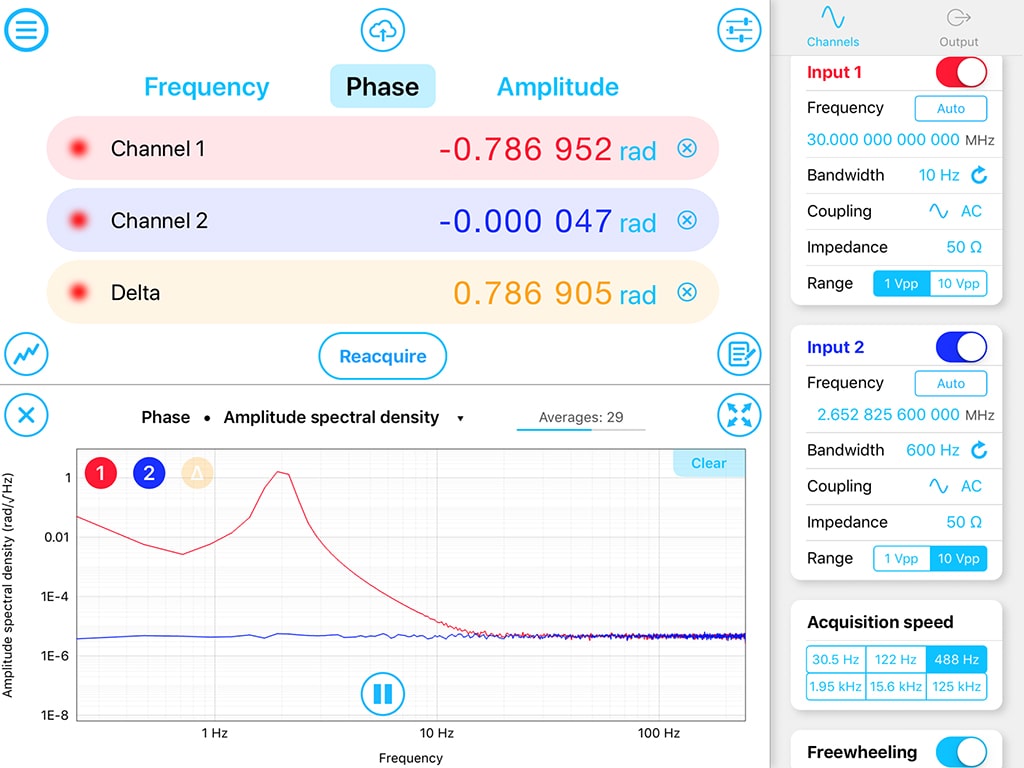Moku:Pro
Meet demanding R&D requirements with high channel density, extensive customization options, and 600 MHz bandwidth in a rack-mountable format
Key benefits of Moku:Pro
Drives enhanced performance and versatility
An entire suite of instruments in one low-noise, multi-channel hardware platform.
Streamlines research with highly integrated instrumentation
Run multiple instruments simultaneously and build custom signal processing pipelines.
Accelerates development with intuitive tools
Integrate custom FPGA code with flexible, high-precision test equipment.
Evolves with your project needs
Work smarter with a user-programmable FPGA, API support, and continuously evolving software.
Flexible research, faster development
The only device that covers test instrumentation needs from advanced optics and photonics research to electronic component test. Built upon a foundation of core electronics lab test equipment, Moku:Pro elevates experiments with a comprehensive suite of instruments. With Moku Cloud Compile, you can implement custom functionality into Moku:Pro and build hardware-deployable bitstreams in minutes.
Utilizing FPGA-based architecture, Moku:Pro seamlessly adapts to your research needs. With multi-channel test capabilities, high bandwidth, and a user-programmable FPGA, the instruments you need are available in an instant. Plus, with Multi-instrument Mode, you can test with up to four instruments simultaneously to reduce complexity and achieve more, faster. The intuitive software combined with powerful hardware means the right tool for the job is already there.
Multiple instruments in a single platform
Consolidate old racks and stacks into one piece of powerful equipment that provides the instruments you need to optimize design and test. As the software evolves, you get instant access to valuable new features sent directly to your Moku device — with no new hardware required.
Get started with Moku:Pro
Try the software now!
To download the software (version 3.1.2), please check the box below before proceeding.
Key specs & capabilities

High speed, high bandwidth, low noise
Our FPGA algorithms automatically and intelligently blend the high-speed and low-speed signals from the 10-bit and 18-bit ADCs to optimize noise performance across the entire frequency range. Rather than simply focusing on minimizing overall noise, the filtering network preserves a unity-gain frequency response for the signal. By utilizing this unique blending scheme, Moku:Pro allows seamless measurements with an optimal SNR across all Fourier frequencies, even for weak-signal applications.
Learn more
Enhanced disturbance rejection
Moku:Pro reduces the need for manual processes and physical adjustments, meaning you can spend more time on your experiment, not your experiment setup. The Laser Lock Box allows you to quickly and efficiently stabilize laser frequencies. By combining the Laser Lock Box and Frequency Response Analyzer in Multi-instrument Mode, you can fully characterize your test setup and loop performance.
Learn how researchers at the Australian National University used Moku:Pro to save time and overhead while researching space-based laser sensing technology,
Read the case study
Streamline research and development
With Multi-instrument Mode, you’re not limited to a single instrument. Daisy chain instruments together to build sophisticated signal processing pipelines and hot-swap instruments in and out without interrupting those running in tandem. In highly experimental labs, Moku:Pro enables researchers to customize their test systems according to the experiment. Learn how researchers at Intel Labs deployed multiple Lock-in Amplifiers and PID Controllers using a single Moku:Pro device.
Read the case study



















